Sarah Sundin's Blog, page 232
February 12, 2018
Three Historical Fiction Authors…Three-Book Giveaway! Q&A #2
 Last week, three historical novels released, spanning the centuries. Jocelyn Green’s A Refuge Assured starts in the French Revolution, Kristy Cambron’s The Lost Castle is a “time-slip” novel with story lines during the French Revolution, in France leading up to D-day in World War II, and in modern times. And my The Sea Before Us leads up to D-day!
Last week, three historical novels released, spanning the centuries. Jocelyn Green’s A Refuge Assured starts in the French Revolution, Kristy Cambron’s The Lost Castle is a “time-slip” novel with story lines during the French Revolution, in France leading up to D-day in World War II, and in modern times. And my The Sea Before Us leads up to D-day!
As release-day sisters, we decided to celebrate together! Six Q&As by the three of us, and we’re giving away three bundles of all three books! You can enter here on my blog, on Jocelyn’s blog, and/or on Kristy’s Instagram! Up to three chances to win! Visit my blog each day from Feb. 12-16 – for additional chances to win!
Q: What is the spiritual theme in your novel?
Kristy:
“Your people will rebuild the ancient ruins and will raise up the age- old foundations; You will be called Repairer of Broken Walls.” (Isaiah 58:12)
Jocelyn:
“Thou art my refuge and my portion in the land of the living” (Psalm 142:5)
Sarah:
“If I…dwell in the uttermost parts of the sea; Even there shall thy hand lead me, and thy right hand shall hold me.” (Psalm 139:10)
For your chance to win a bundle of all three books, please enter the Rafflecopter below. US addresses only please. Giveaway ends Feb. 18, 2018 at midnight. Winners will be announced here on Mon. Feb. 19.
The Sea Before Us Release Day Giveaway – Winner!
 Thank you so much to all of you who helped me celebrate the release of The Sea Before Us and who spread the word about The Sea Before Us Release Day Giveaway. We had 2614 entries! I’m thrilled to see so much interest!
Thank you so much to all of you who helped me celebrate the release of The Sea Before Us and who spread the word about The Sea Before Us Release Day Giveaway. We had 2614 entries! I’m thrilled to see so much interest!
The difficult part was picking ONE winner! So we decided to break it into three groups with three winners and a runner-up!
The three winners will be contacted in order and will receive their choice (in order) of the three prize packs: Teatime with Dorothy, London at War, or To Normandy with Wyatt. The runner-up will receive a copy of The Sea Before Us and a The Sea Before Us totebag!
The winners are…
Tisha Martin
Vicky La Pere
Carole Lovin
Stephanie Phelps
Thank you once again for your support! Happy reading!


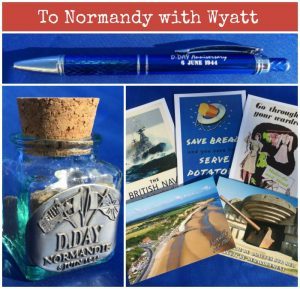
Three Historical Fiction Authors…Three-Book Giveaway! Q&A #1
 Last week, three historical novels released, spanning the centuries. Jocelyn Green’s A Refuge Assured starts in the French Revolution, Kristy Cambron’s The Lost Castle is a “time-slip” novel with story lines during the French Revolution, in France leading up to D-day in World War II, and in modern times. And my The Sea Before Us leads up to D-day!
Last week, three historical novels released, spanning the centuries. Jocelyn Green’s A Refuge Assured starts in the French Revolution, Kristy Cambron’s The Lost Castle is a “time-slip” novel with story lines during the French Revolution, in France leading up to D-day in World War II, and in modern times. And my The Sea Before Us leads up to D-day!
As release-day sisters, we decided to celebrate together! Six Q&As by the three of us, and we’re giving away three bundles of all three books! You can enter here on my blog, on Jocelyn’s blog, and/or on Kristy’s Instagram! Up to three chances to win! Visit my blog each day from Feb. 12-16 – for additional chances to win!
Q: What was your novel inspiration?
Kristy:
Before wartime memories are lost to Alzheimer’s, a granddaughter travels to French wine country to learn her family’s past, and uncover the French Revolution and WWII legacies of a forgotten storybook castle.
Jocelyn:
A lacemaker seeks asylum from the French Revolution in politically-charged America, only to find she can’t escape its reach even in Philadelphia.
Sarah:
As D-day approaches, an American naval officer and a British Wren work together, but his success may destroy what she loves most.
For your chance to win a bundle of all three books, please enter the Rafflecopter below. US addresses only please. Giveaway ends Feb. 18, 2018 at midnight. Winners will be announced here on Mon. Feb. 19.
Today in World War II History—Feb. 12, 1943
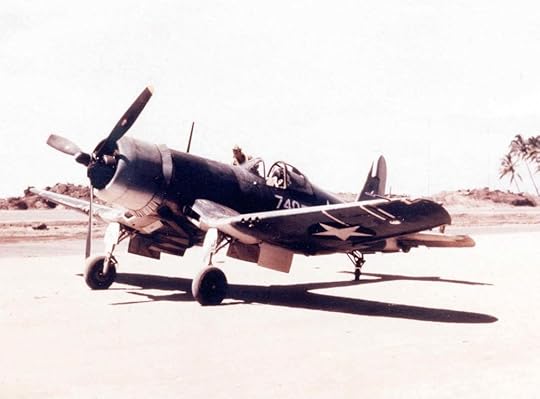
Marine F4U-1 Corsair, Torokina Airstrip, Bougainville, Solomon Islands, early 1943 (US Marine Corps photo)
75 Years Ago—Feb. 12, 1943: Combat debut of US Marine Corps Vought F4U Corsair fighters: 12 F4Us from Guadalcanal fly raid to Vella Lavella in the Solomon Islands.
Gen. Maximilian von Weichs resigns as commander of German Army Group B (eastern front) due to disagreements with Hitler.
February 11, 2018
Today in World War II History—Feb. 11, 1943

Gen. Dwight D. Eisenhower, 31 Dec 1943 (US National Archives)
75 Years Ago—Feb. 11, 1943: Dwight Eisenhower, commander of US North African Theater of Operations, is promoted to four-star general.
Soviets take rail junction of Lozovaya, Ukraine.
February 10, 2018
The Sea Before Us – Tour of Omaha Beach
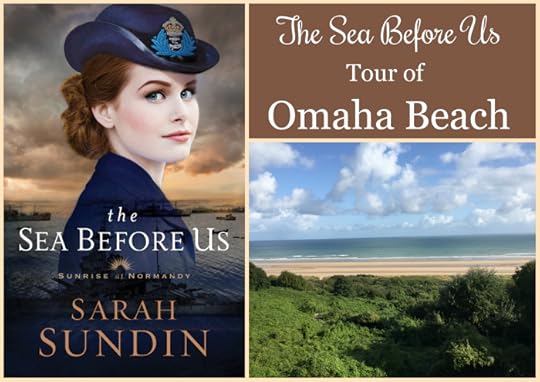 To celebrate the release of The Sea Before Us, I’m conducting a photo tour of locations from the novel that I saw on my research trip to England and Normandy in September.
To celebrate the release of The Sea Before Us, I’m conducting a photo tour of locations from the novel that I saw on my research trip to England and Normandy in September.
February 8—Southwick House near Portsmouth
Today—Omaha Beach
Don’t forget to enter The Sea Before Us Release Day Giveaway, which includes lots of items I picked up on the trip, including sand I collected on Omaha Beach. Giveaway runs Feb. 6-11, 2018.
D-day, Operation Overlord, is one of the most pivotal events of World War II and modern history. For four years, Hitler’s Nazi Germany had occupied most of Europe. During that time period, the Allies slowly regained strength and weaponry. On June 6, 1944, 156,000 British, Canadian, American, Free French, and other Allied troops invaded northern France in Normandy, supported by almost 200,000 Allied naval personnel, while 11,000 aircraft flew overhead.
The troops landed on five landing beaches. From east to west—Sword (British), Juno (Canadian), Gold (British), Omaha (US), and Utah (US). The generals knew the landings at Omaha would be the toughest due to the steep bluffs and the crescent shape of the beach. Making it worse, the crack German 352nd Infantry Division had recently arrived in the area, unknown to Allied intelligence.
On D-day about 34,000 troops of the US 1st and 29th Infantry Divisions landed on Omaha. Casualties were high, about 3600 killed or wounded, with the highest casualties among the troops landing in the first wave. Units were mixed up, officers were lost, and the situation remained dire through most of the morning. However, bold, flexible, and ingenious leadership arose, and the men charged up the bluffs, supported by naval fire from the courageous men of US Destroyer Squadron 18. By the end of the day, the US had a solid foothold on Omaha Beach, although far from the initial objectives.
In The Sea Before Us, American naval officer Lt. Wyatt Paxton serves on a destroyer bombarding Omaha Beach. I was honored to visit Omaha in September 2017. Here are pictures of Vierville-sur-Mer on Omaha Beach, including the “draw” (the route off the beach), and the German batteries defending that draw. These pictures were taken at high tide, while the troops landed a little after low tide.
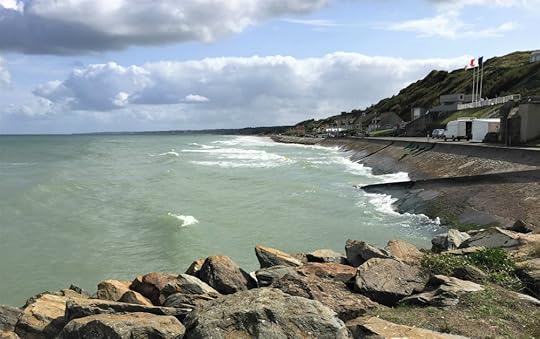
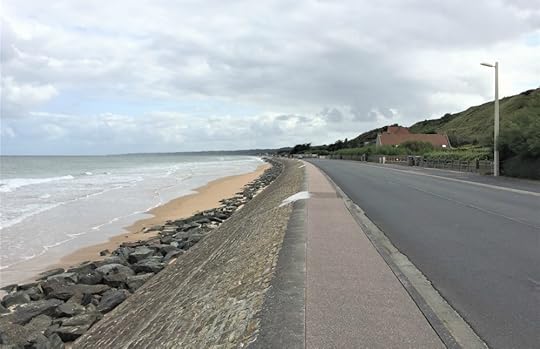
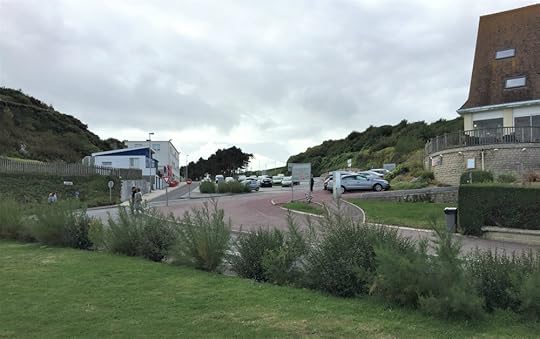
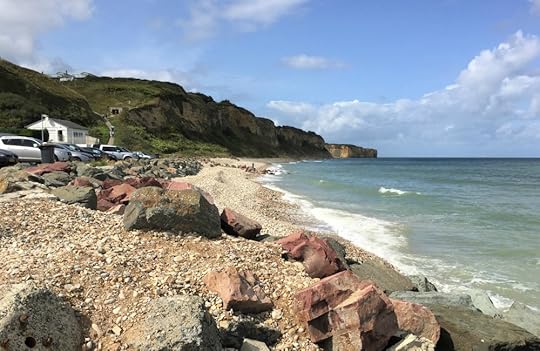
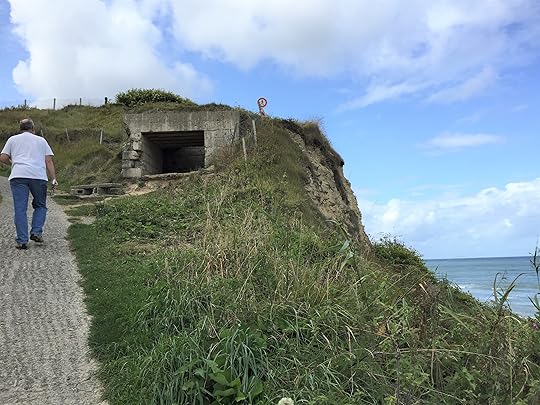
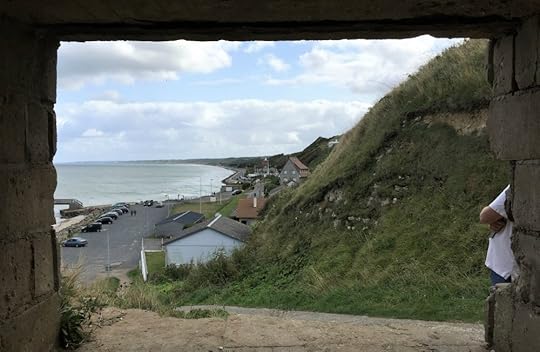
Here are homes in Vierville-sur-Mer along Dog Beach, much like the summer home fondly remembered by the heroine of the novel, Dorothy Fairfax. Many of the homes had been demolished by the Germans to open fields of fire, while others had been turned into strongpoints. You can see the steep terrain behind the homes that the soldiers had to climb. Also, a former German gun battery, now a memorial for the US National Guard.
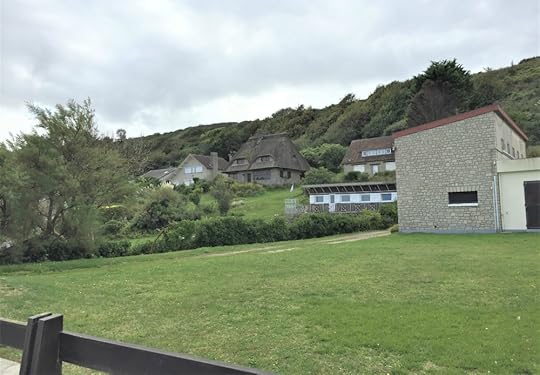
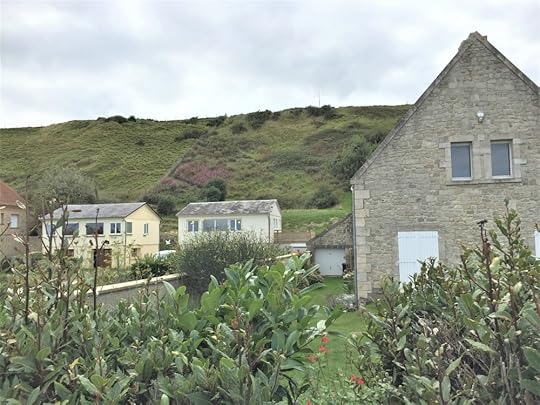
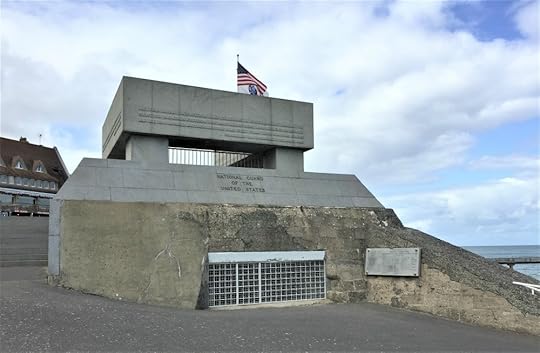
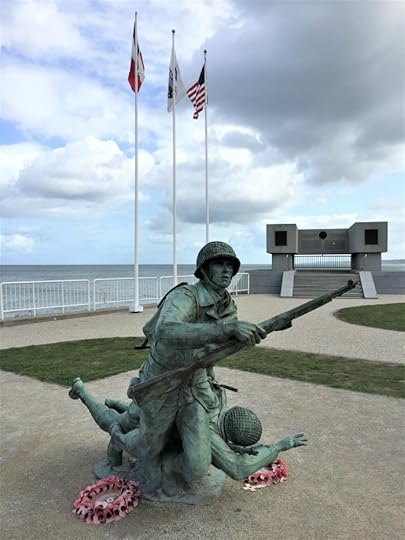
Farther east, we come to the Easy Red/Fox Green sector of Omaha Beach, below the Normandy American Cemetery and Memorial in Colleville-sur-Mer. These pictures were taken close to low tide and show the vast expanse of beach the American soldiers had to cross. Laden with heavy equipment, waterlogged, and seasick. Taking heavy fire. And watching their buddies fall. Standing on Omaha Beach is incredibly moving experience.
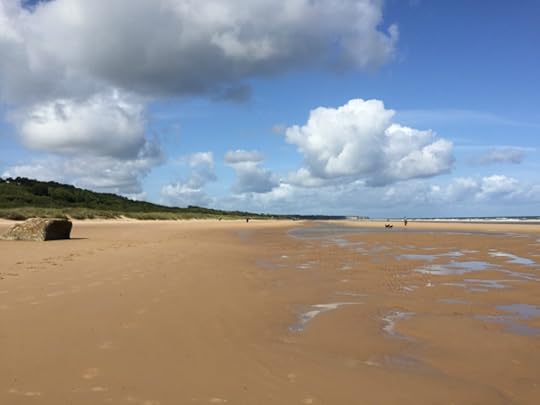
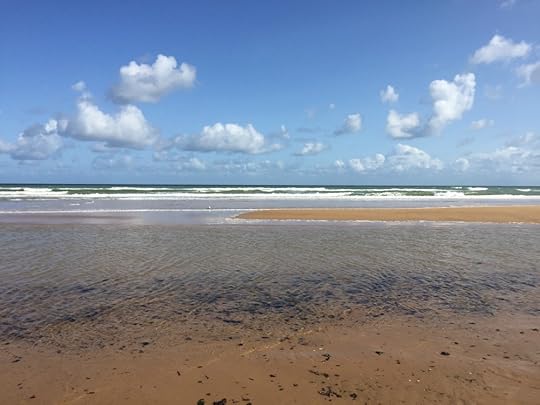
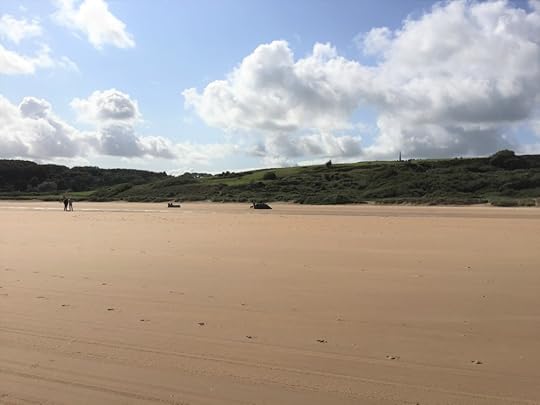
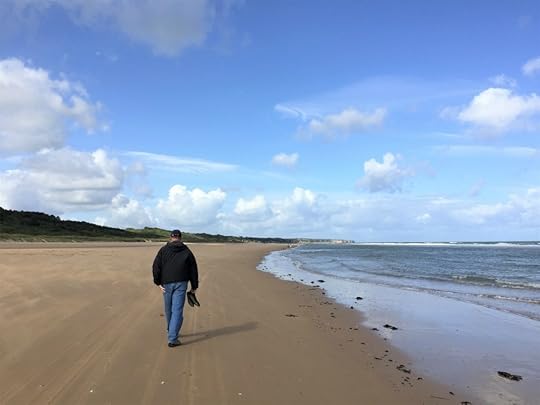

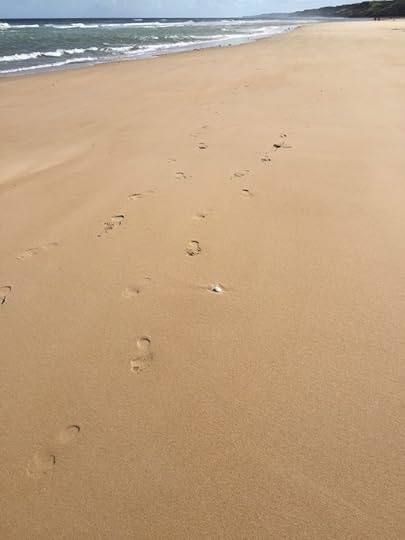
This is a sample of the defenses the men on Omaha Beach faced. Widerstandsnest 62 lies along the path from Colleville-sur-Mer and overlooks Omaha with an interconnected cluster of machine-gun nests and gun positions. As you can see, the big gun positions were sighted to fire down the length of the beach. Therefore, the ships at sea had a difficult time spotting the guns—and targeting them.
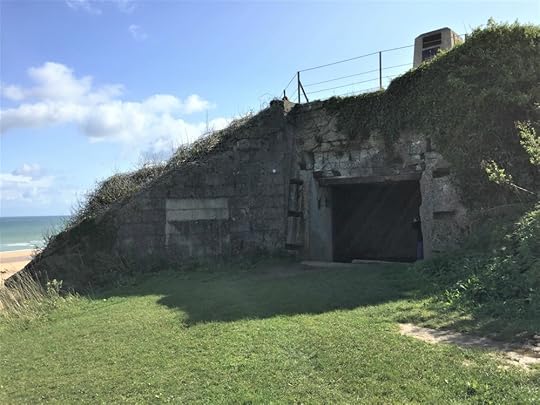
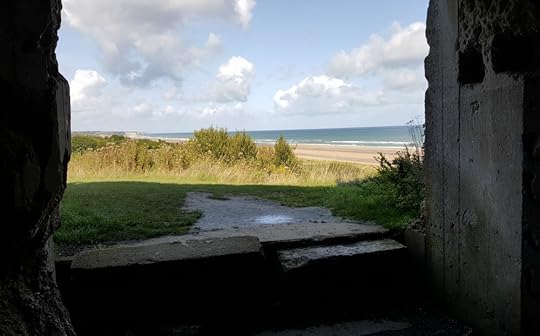
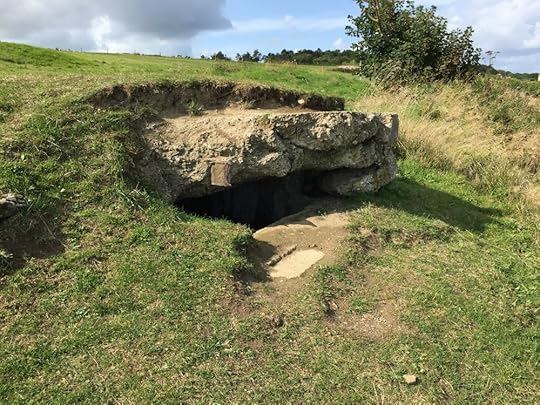
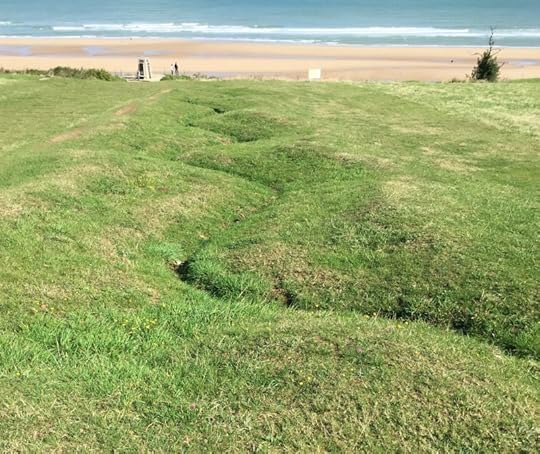
Looking down on Omaha Beach from near Colleville-sur-Mer.
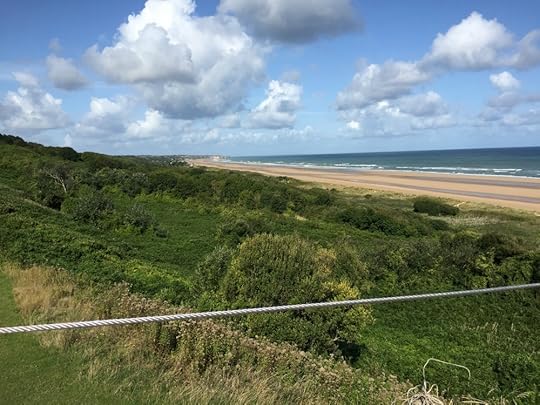
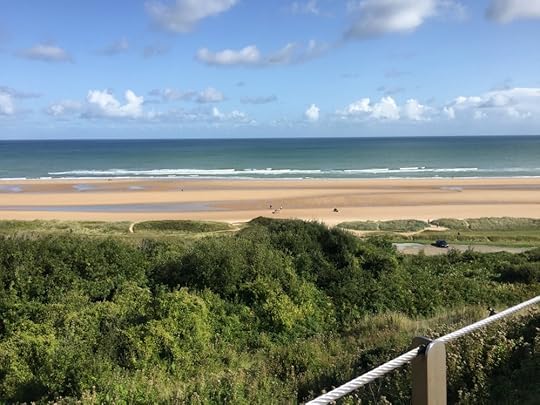
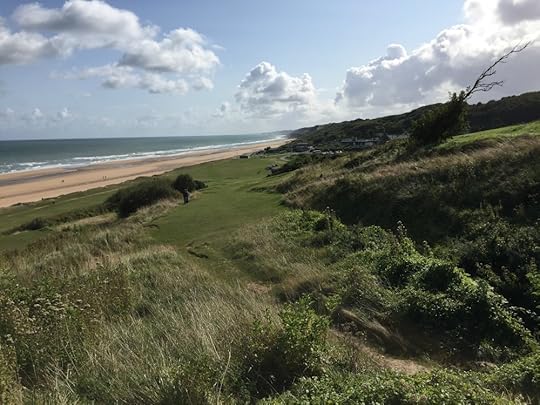
Visiting the Normandy American Cemetery and Memorial is an unforgettable experience. The sheer scope of the sacrifice and loss is overwhelming. The brave men—and some women—buried there gave up their lives so that freedom could triumph over tyranny. We must never forget what they did for us.
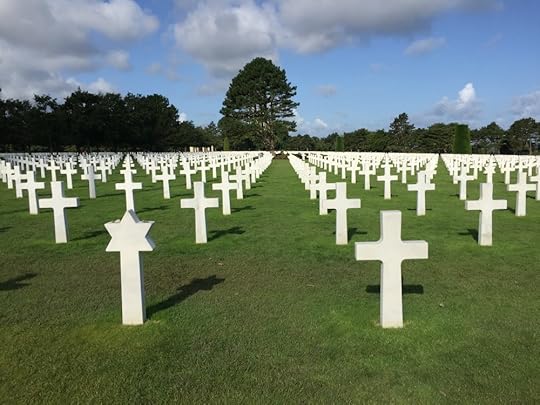
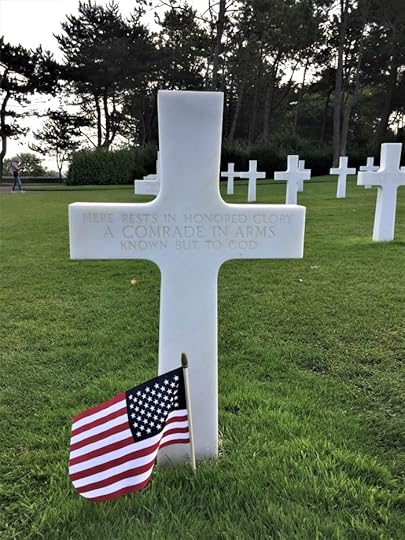
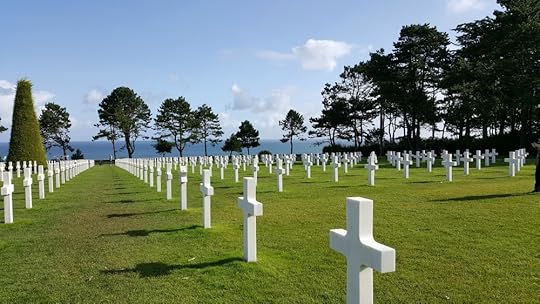
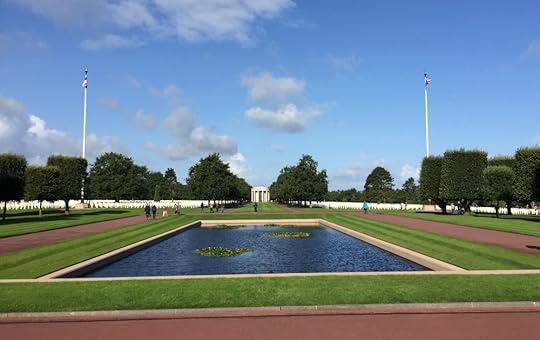
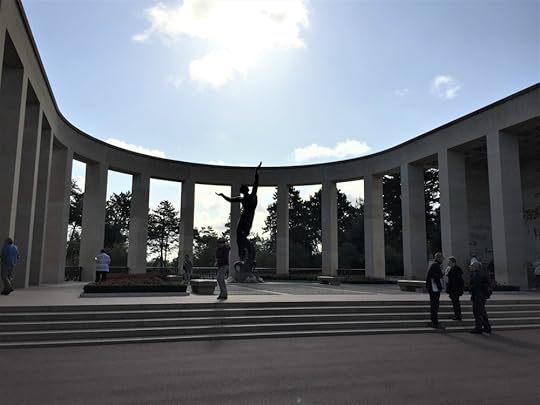
Thank you for joining me in England and Normandy. I hope you’ve enjoyed the photographs, the history behind them, and the connection to The Sea Before Us. When The Sky Above Us and The Land Beneath Us release in 2019 and 2020, I’ll share the photos from England and Normandy related to those stories.
Today in World War II History—Feb. 10, 1943

Mohatma Gandhi with Jawaharlal Nehru, 1942 (Library of Congress)
75 Years Ago—Feb. 10, 1943: In India, Mohatma Gandhi begins a 21-day hunger strike, which leads to rioting, but Britain makes no concessions.
February 9, 2018
The Sea Before Us Tour – D-Day at Sea
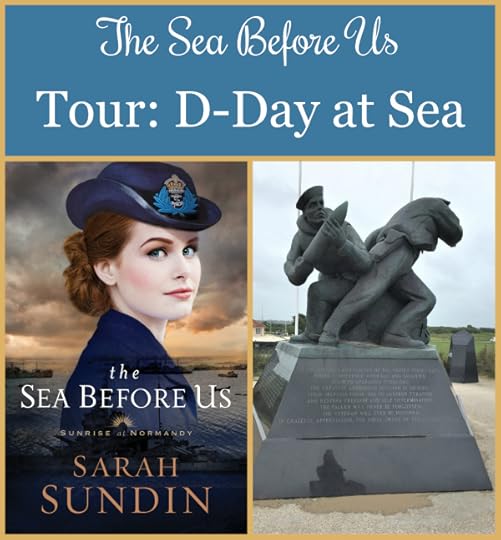 To celebrate the release of The Sea Before Us, I’m conducting a photo tour of locations from the novel that I saw on my research trip to England and Normandy in September.
To celebrate the release of The Sea Before Us, I’m conducting a photo tour of locations from the novel that I saw on my research trip to England and Normandy in September.
February 8—Southwick House near Portsmouth
Today—D-day at Sea
February 10—Omaha Beach
Don’t forget to enter The Sea Before Us Release Day giveaway, which includes lots of items I picked up on the trip! Giveaway runs Feb. 6-11, 2018.
In The Sea Before Us, American naval officer Lt. Wyatt Paxton serves first in London with the naval planning for D-day and later on a destroyer bombarding Omaha Beach. Today I’m featuring a hodgepodge of photos that relate to the naval aspect of D-day, from Portsmouth Harbor, to crossing the Channel, to the German gun batteries targeted by naval bombardment, to monuments and artifacts.
First, here is a copy of the orders for Operation Neptune, the naval component of D-day, at the National Museum of the Royal Navy in Portsmouth. The thick book of orders put out by Adm. Sir Bertram Ramsay’s Allied Naval Expeditionary Force Headquarters covered every possible aspect in minute detail that baffled and frustrated the men of the US Navy, who were used to more general orders and more control by individual commanders at sea—but they did lay a solid foundation for this joint effort. Here is also a copy of Ramsay’s Order of the Day, issued to all naval personnel on D-day. Also, a map showing naval action on D-day, on the memorial at the Normandy American Cemetery and Memorial at Omaha Beach.
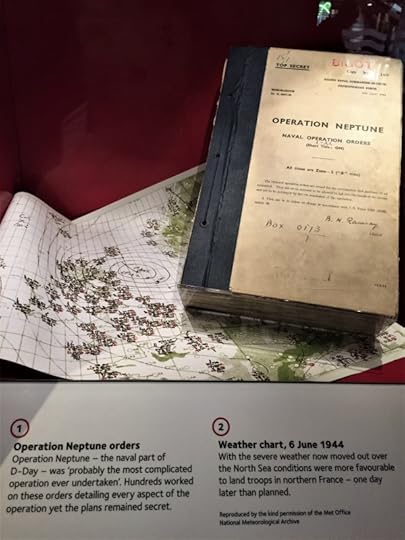
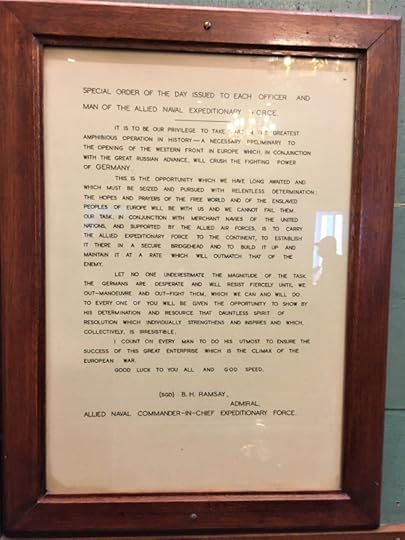
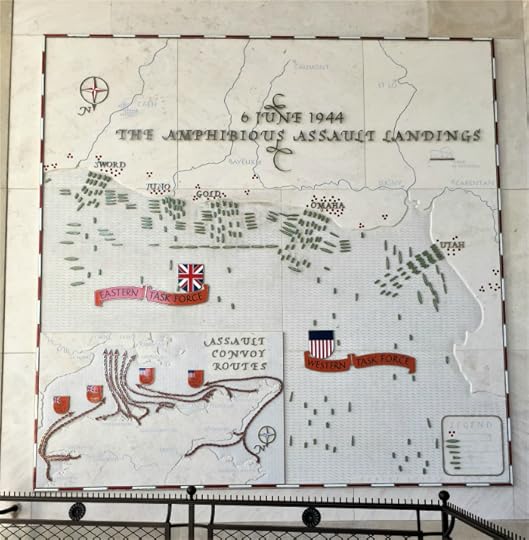
Now that we know the plan, let’s sail! Wyatt sailed from Weymouth with the ships of US Destroyer Squadron 18, but many ships sailed from Portsmouth. I was privileged to take a harbor cruise at the Portsmouth Historic Dockyard.
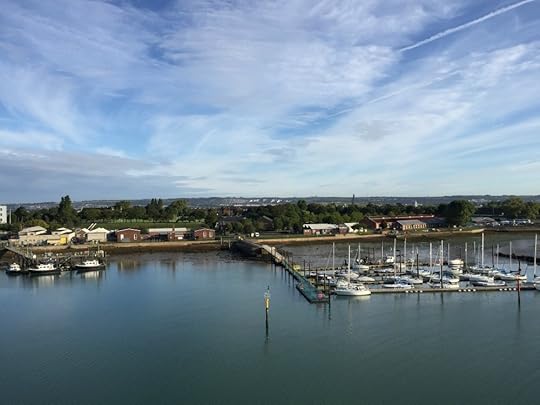
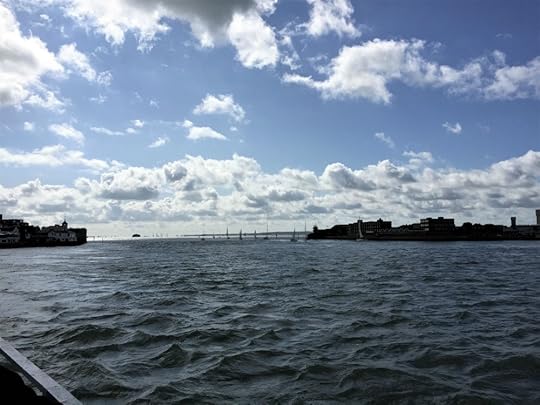
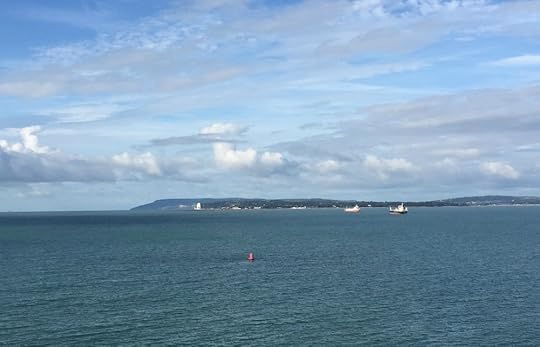
Let’s cross the Channel! My husband I took the ferry from Portsmouth across the English Channel to Ouistreham, which was near Sword Beach, where British troops landed on D-day. The weather was cool, cloudy, and blustery, not unlike the troops faced on D-day, and seeing the shores of Normandy take shape on the horizon was an incredibly moving experience.
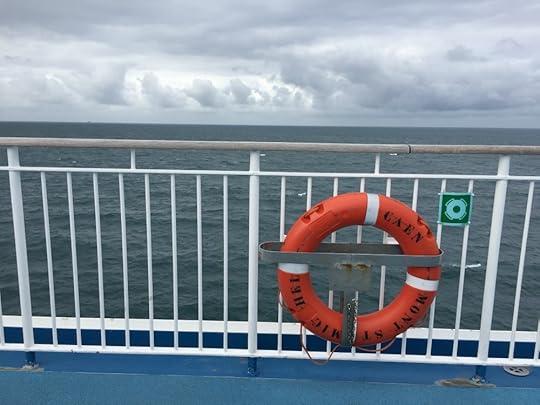
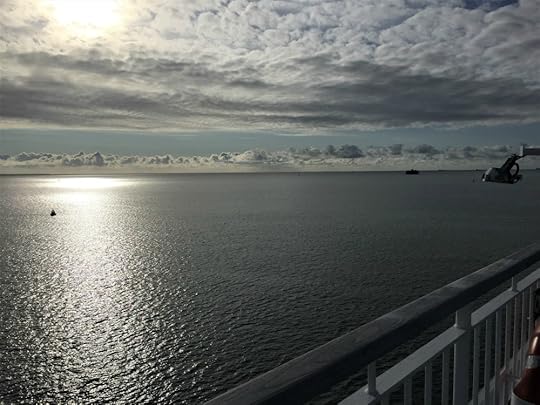
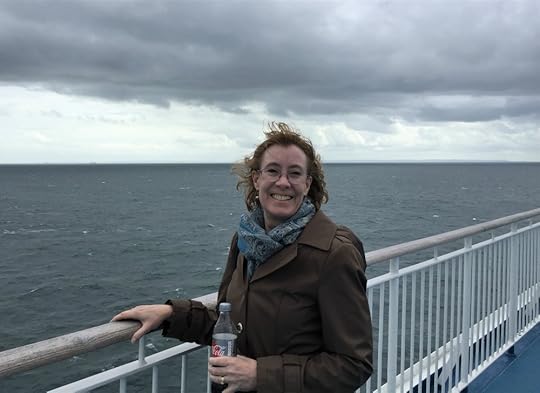
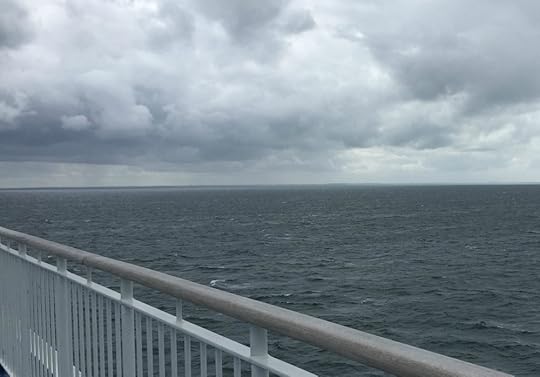
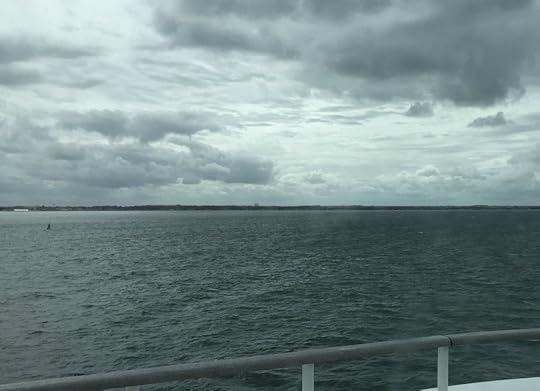
On D-day, the Allied warships did battle with German shore batteries, which were targeting Allied troops on the landing beaches. These huge guns were often set in thick reinforced concrete casements that were virtually indestructible. To destroy one meant lobbing a shell into the narrow openings. However, hitting the batteries often damaged the guns and drove the gun crews to seek shelter, which bought critical time for the soldiers on the beaches. These photos are from the batteries at Longues-sur-Mer, in the British sector between Gold Beach and Omaha Beach.
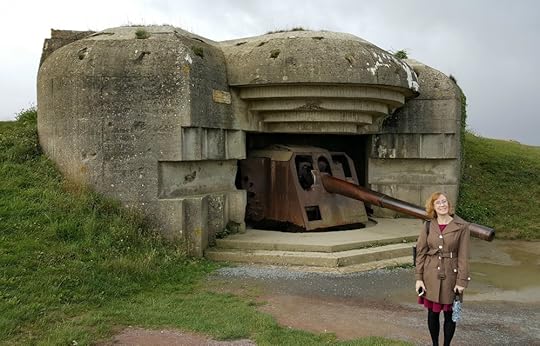

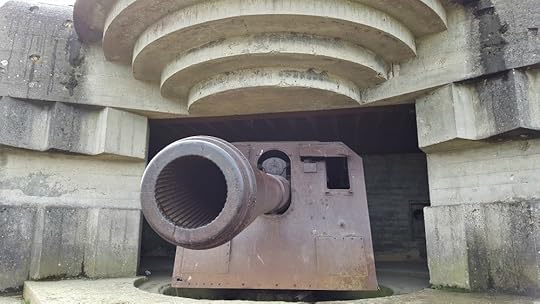
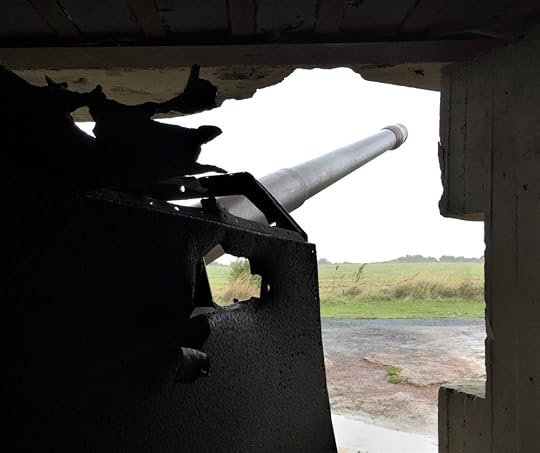
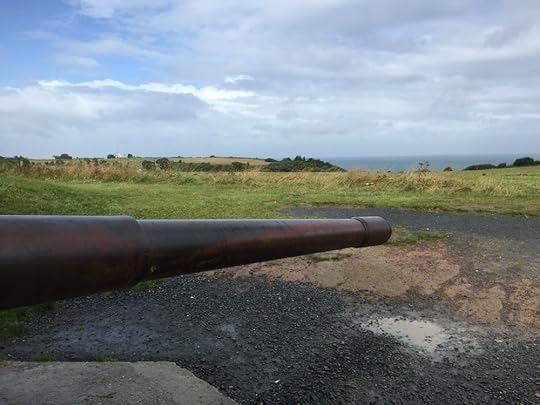
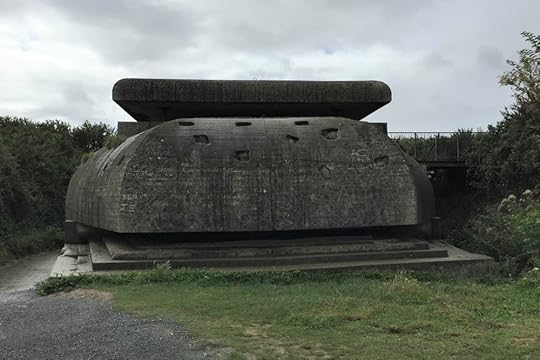
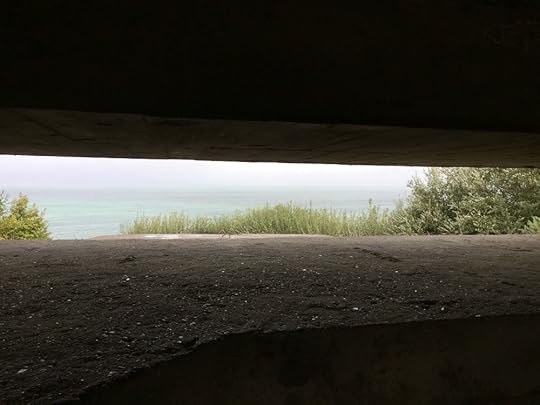
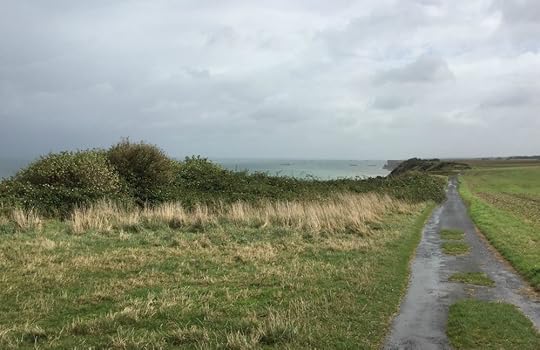
The Maisy battery is off the beaten track but well worth a visit for more adventurous tourists. These guns were trained on Utah Beach. A little farther inland, the guns and bunkers were well camouflaged, either underground or by the use of camouflage nets, making them difficult to spot by sea or air.
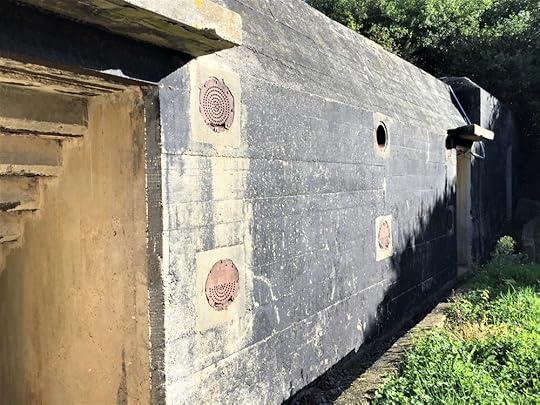
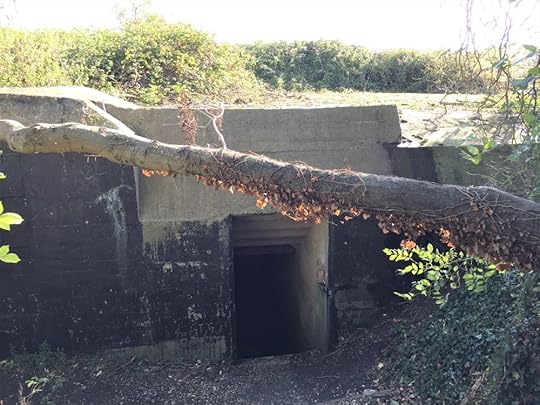
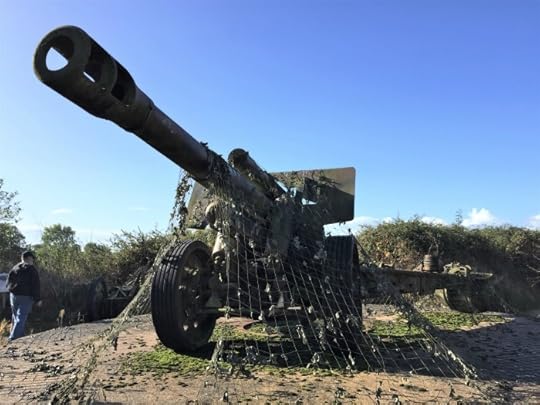
Utah Beach contains the only memorial in Normandy to the sailors and naval officers who helped make D-day possible. Over five thousand ships and almost two hundred thousand naval personnel participated on that momentous day, and their actions deserve to be commemorated. The statue depicts a sailor loading a gun for shore bombardment, a naval officer calling out orders, and a member of a naval combat demolition unit (these me served on the landing beaches and took heavy casualties). Surrounding the statue are plaques with arrows pointing to where the ships
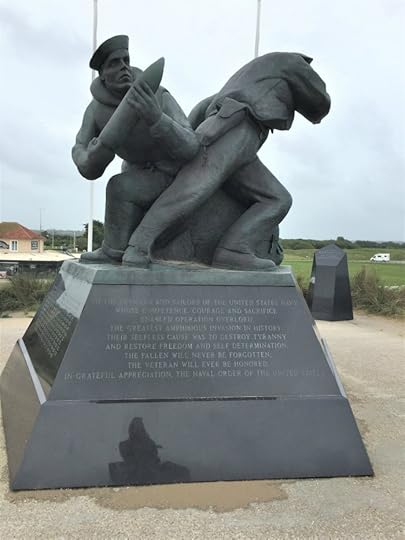
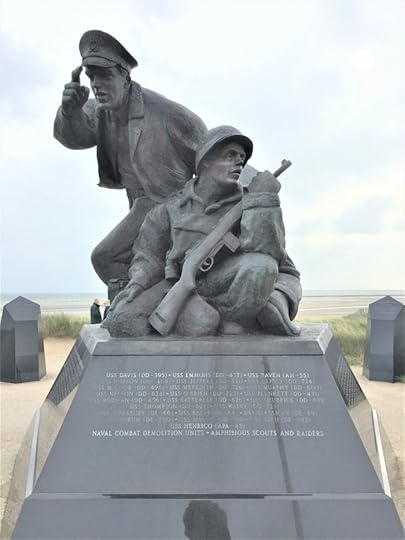
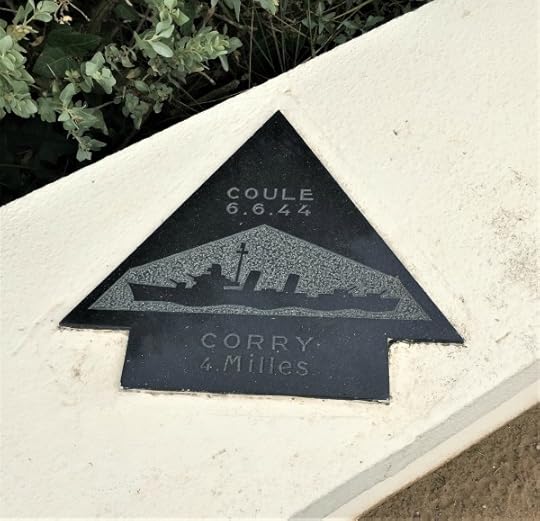
Please join me tomorrow when we’ll tour Omaha Beach.
Today in World War II History—Feb. 9 1943
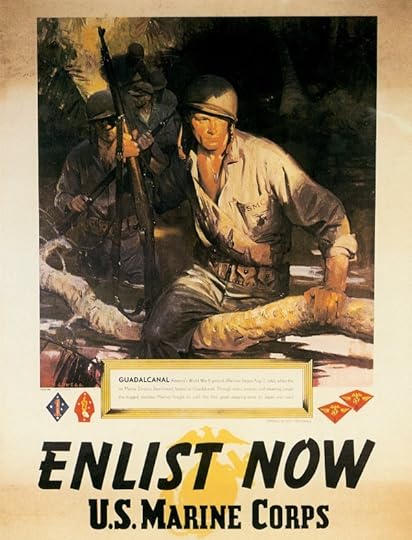
US poster, 1945
75 Years Ago—Feb. 9 1943: US secures Guadalcanal; in the campaign, 1700 Americans and 40,000 Japanese were killed.
President Roosevelt orders a 48-hr work week in war plants.
February 8, 2018
The Sea Before Us – Tour of Southwick House
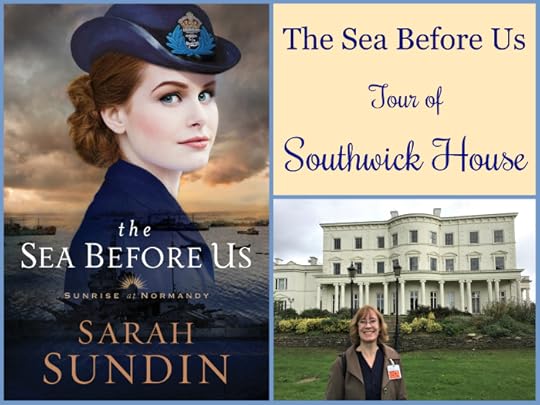 To celebrate the release of The Sea Before Us, I’m conducting a photo tour of locations from the novel that I saw on my research trip to England and Normandy in September.
To celebrate the release of The Sea Before Us, I’m conducting a photo tour of locations from the novel that I saw on my research trip to England and Normandy in September.
Today—Southwick House near Portsmouth
February 9—D-day at Sea
February 10—Omaha Beach
Don’t forget to enter The Sea Before Us Release Day giveaway, which includes lots of items I picked up on the trip! Giveaway runs Feb. 6-11, 2018.
Southwick House in the village of Southwick, not far north of Portsmouth, England, is not a common tourist site—but it has great historical importance. For the record, Southwick House is on an active military base, and you have to apply in advance for security clearance – but it’s well worth it!
On April 26, 1944, Adm. Sir Bertram Ramsay transferred his Allied Naval Expeditionary Force Headquarters from London to Southwick House as battle headquarters for Operation Neptune, the naval component of D-day. And in the first two days of June, both Gen. Bernard Montgomery and Gen. Dwight Eisenhower moved their headquarters to trailers (caravans to the British) on the manor grounds.
All these great and famous men, and many great and not-so-famous men and women, were at Southwick House on D-day, nervously studying the map and waiting for reports.
In the library of Southwick House early on June 4, Eisenhower heard an unfavorable weather report and made the difficult decision to postpone D-day from June 5 to June 6, which required recalling a great number of ships already at sea. At 0415 on June 5, while a storm howled outside, RAF Meteorologist Group Captain James Stagg forecast a mild break in the weather for June 6. Eisenhower faced a difficult choice. If he postponed again, it would mean waiting two full weeks for the proper tide and moon. But if the forecast was wrong, he could be launching the largest invasion in history in the middle of a storm, dooming it to failure. After some thought and consultation, Eisenhower quietly said, “Okay. Let’s go.”
In The Sea Before Us, Women’s Royal Naval Service (“Wren”) Dorothy Fairfax serves at Southwick House.
By the way, most of the people in these photos were with Valor Tours. They kindly gave us a ride on their tour bus onto the grounds of Southwick House and “adopted” us for the day. The nicest group of history buffs and an extremely knowledgeable guide!
Let’s start our photo tour outside…

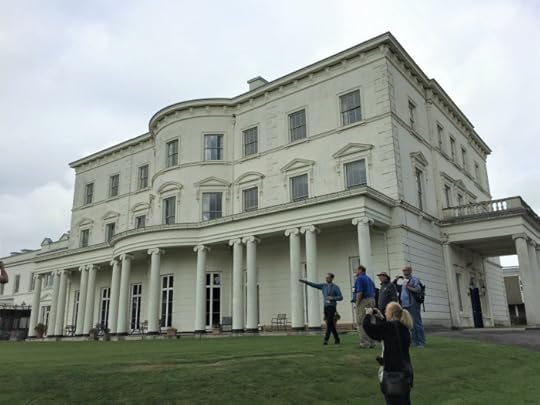


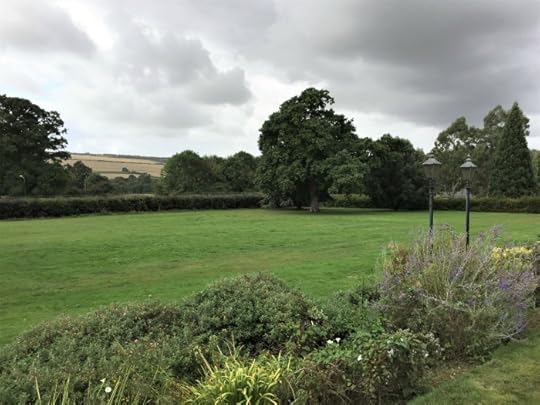
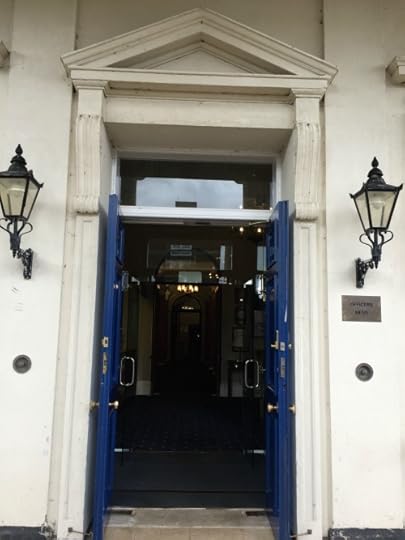
Shall we go inside?
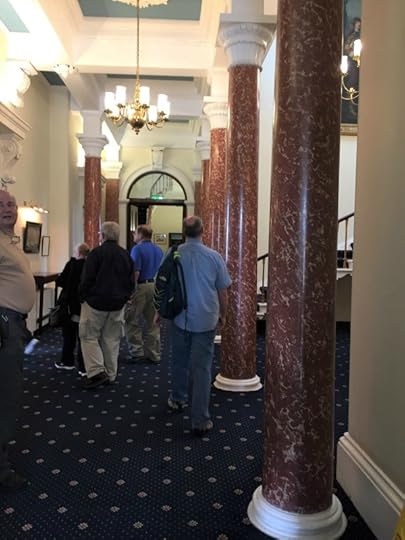
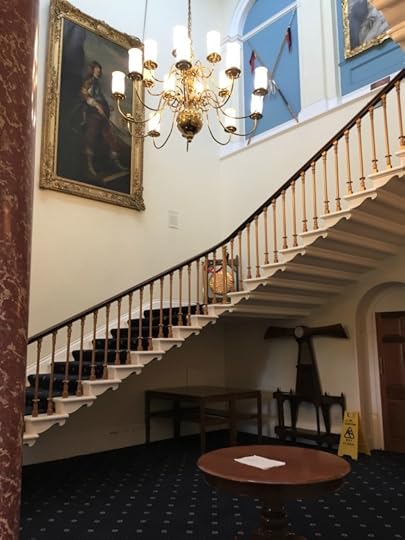
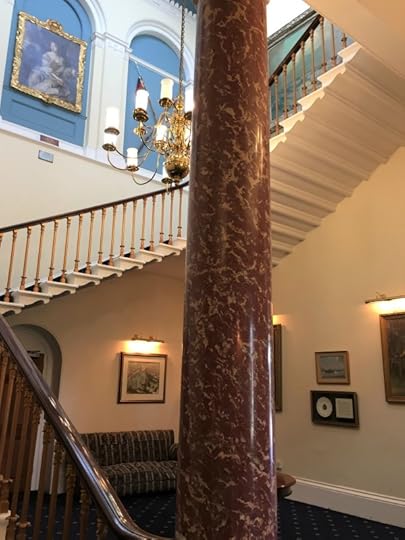


Last we enter the map room. This is the actual giant wooden wall map used by the commanders to monitor the progress on D-day. It’s set for D-day at H-hour.

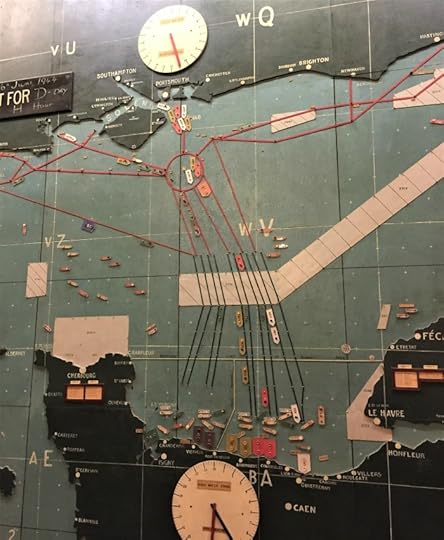
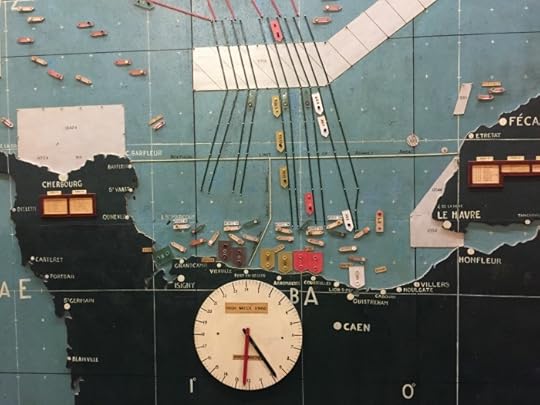
While we’re in the neighborhood, we should see the darling village of Southwick.
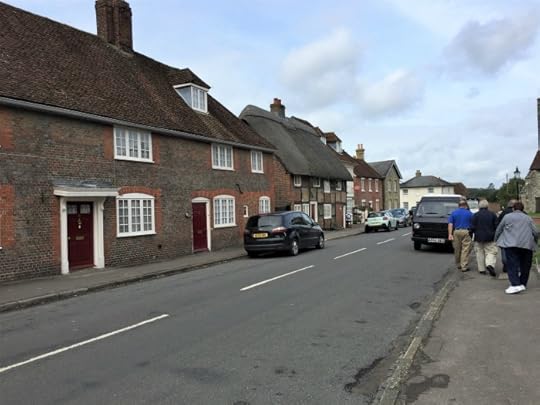
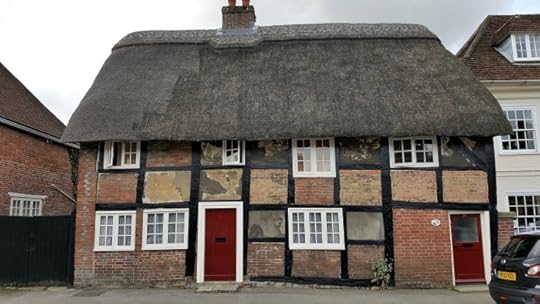
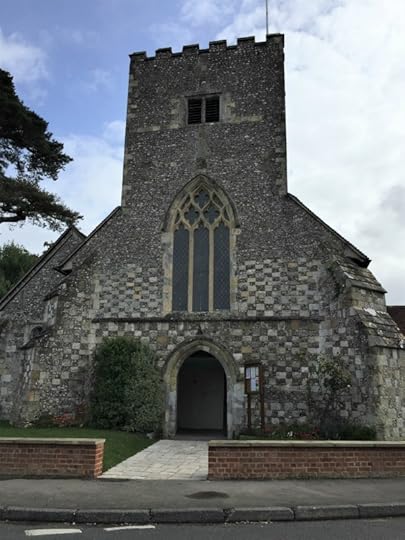
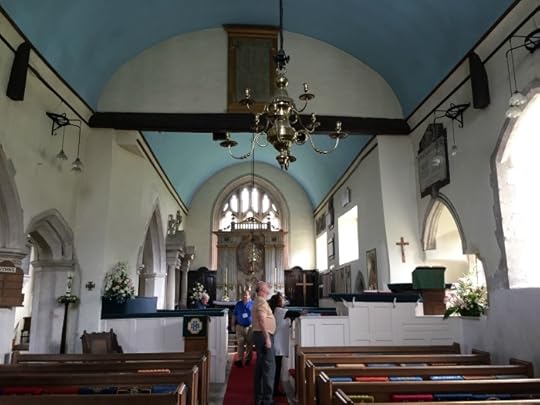
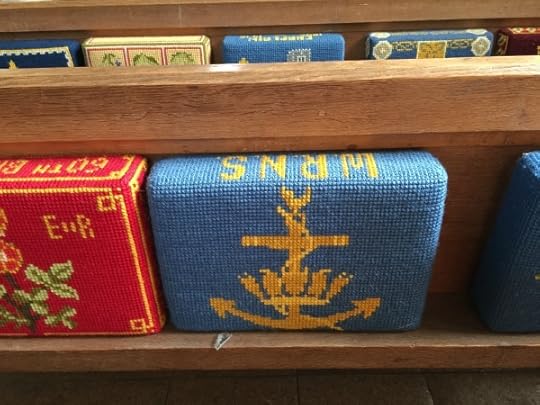
Hungry? The Golden Lion in Southwick serves fine pub fare—and it’s a historic site as well. Eisenhower and Montgomery used to dine here!

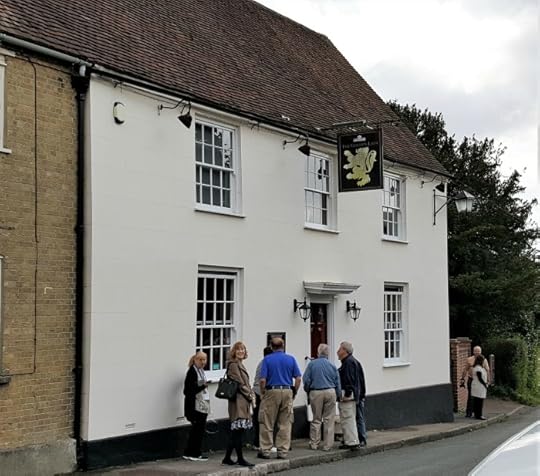
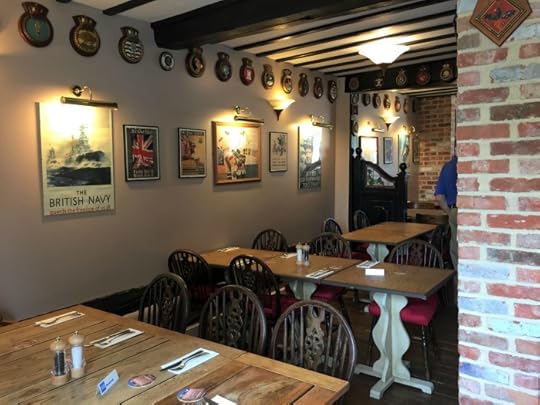
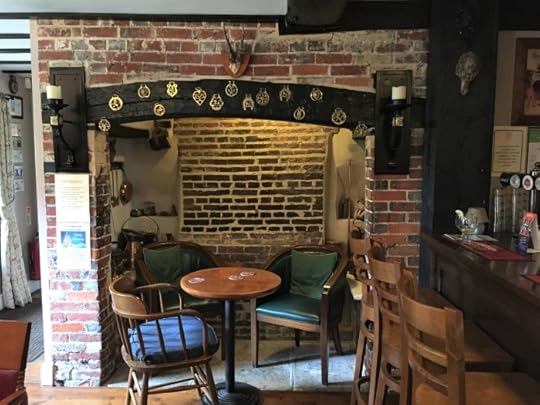
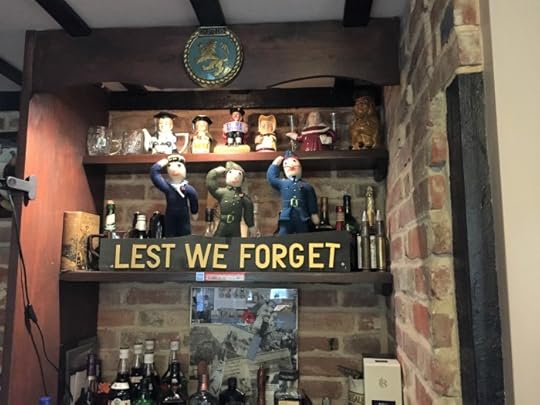
Hope to see you tomorrow for “D-Day at Sea.” We’ll cross the English Channel by ferry and see sites pertaining to the naval aspect of D-day.



